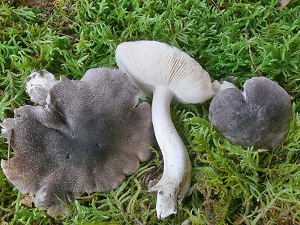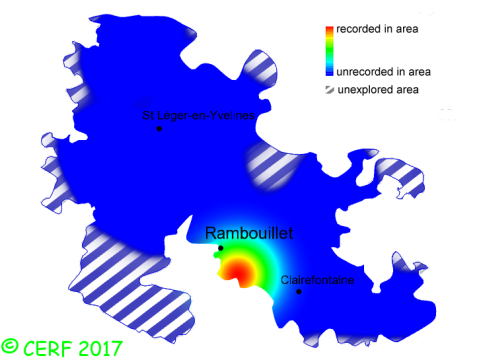| Tricholoma orirubens Quél. |
|
|
|
|
|
|
The cap is dark grey, convex then expanded, sometime with a central acute umbo; its margin is smooth, brighter, sometimes stained with red. The cap surface is covered with fibrils or small grey-brown scales on a pale background, dry, not viscid nor sticky. The stem is white, smooth, with its base often spotted with blue-green markings, pink-coloured when touched or with age, on top of yellow mycelium strands, without ring nor ring zone. The flesh is white, the cap edge turning slowly to red within 24h upon collection; its taste is faint, mild, mealy or fruity; the odour is complex, essentially mealy, but also fragrant, of jasmine; its texture is fibrous. The gills are white to grey, their edge reddening with age or several hours after collection, emarginate to adnate, rather crowded . The spore print is white. This species is mycorrhizal. It grows on the ground, in broad-leaved (and less frequently, coniferous) woods, on a rather calcareous soil, with beech, oak, hornbeam, also more rarely with fir. The fruiting period takes place from July to November.
Distinctive features : Dark-grey, fibrillose cap; edge of cap and gills reddening with age or very slowly when manipulated (several hours after collection); blue-green and pink spots at stem base; yellow mycelium; mealy odour Tricholoma orirubens is rare and confined in the forest of Rambouillet, and is infrequent, more generally speaking . | ||
|
page updated on 14/01/18

